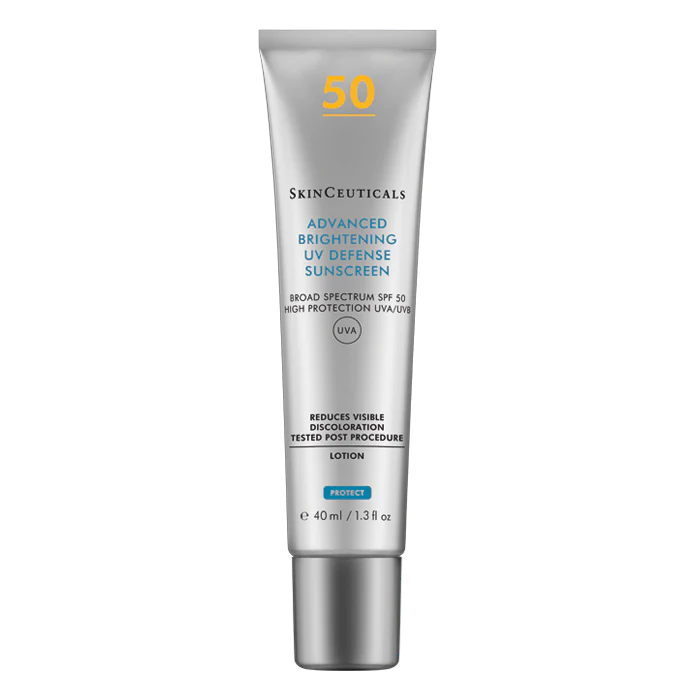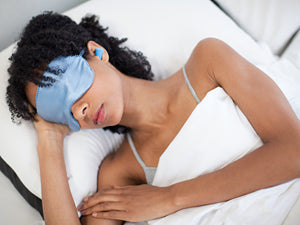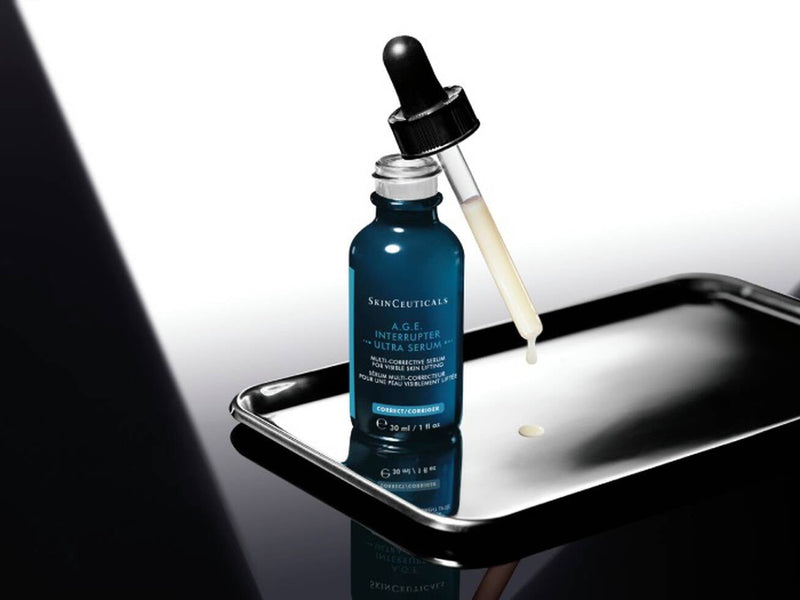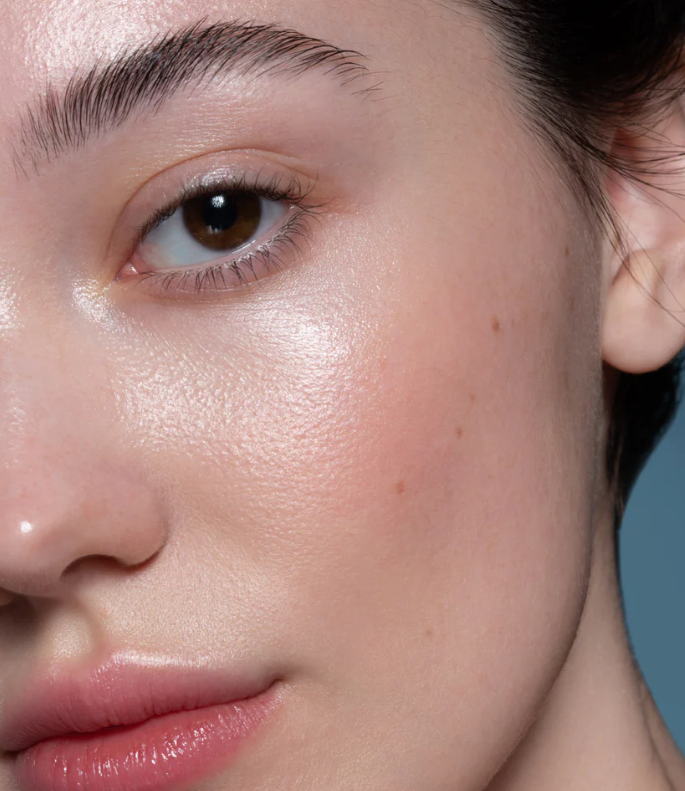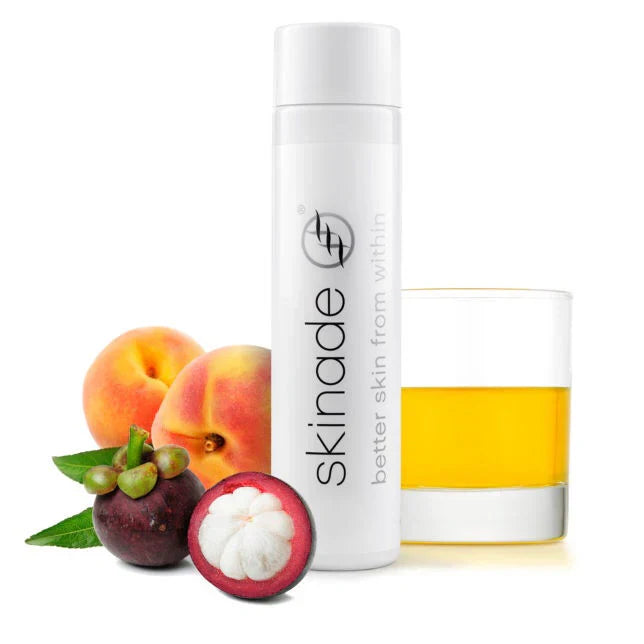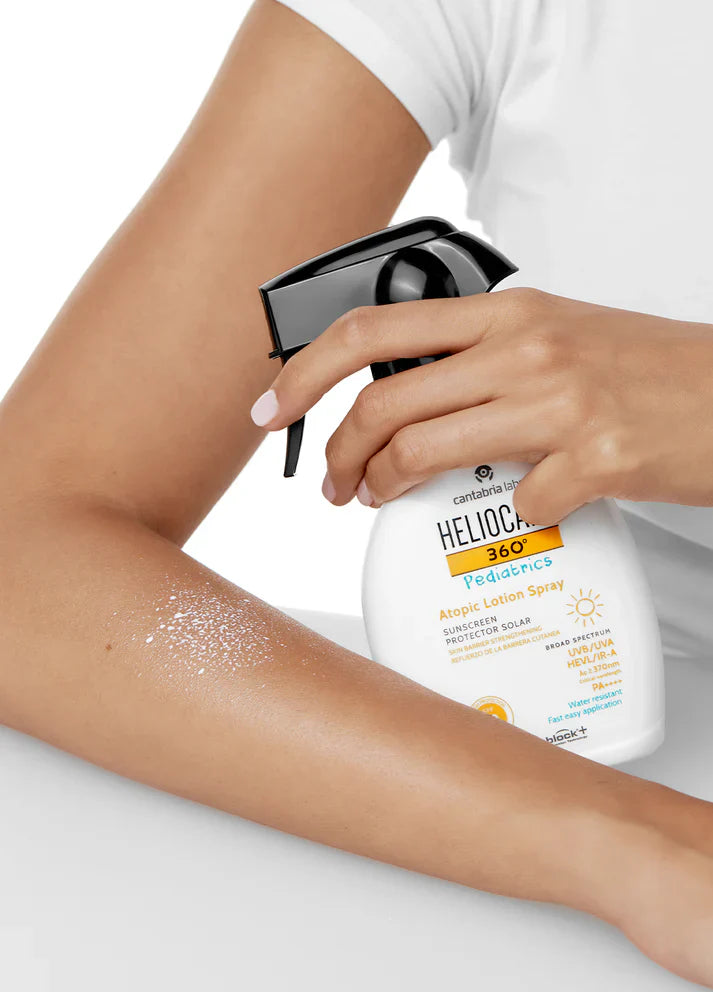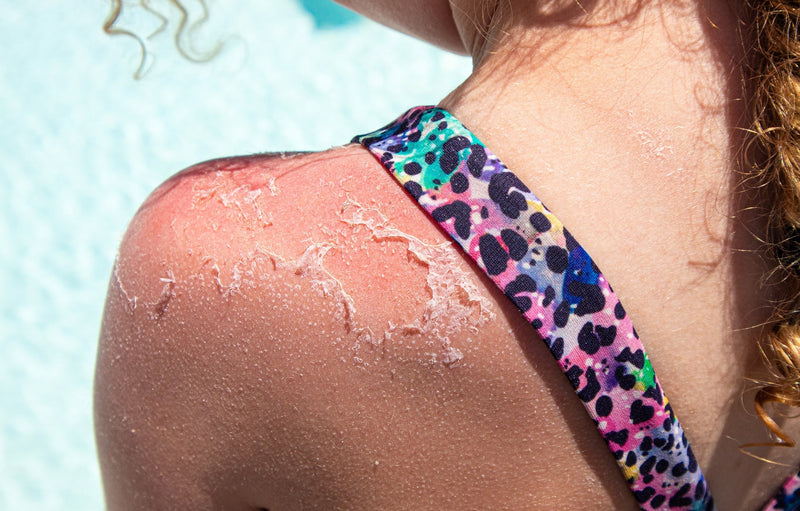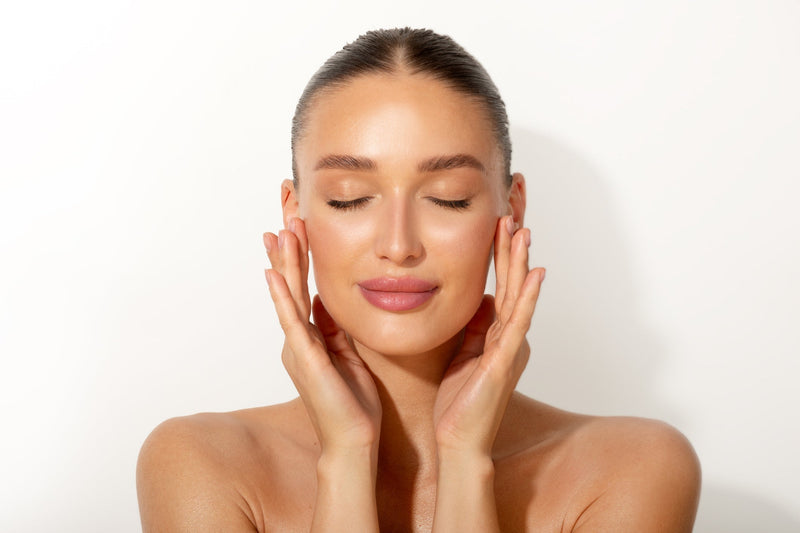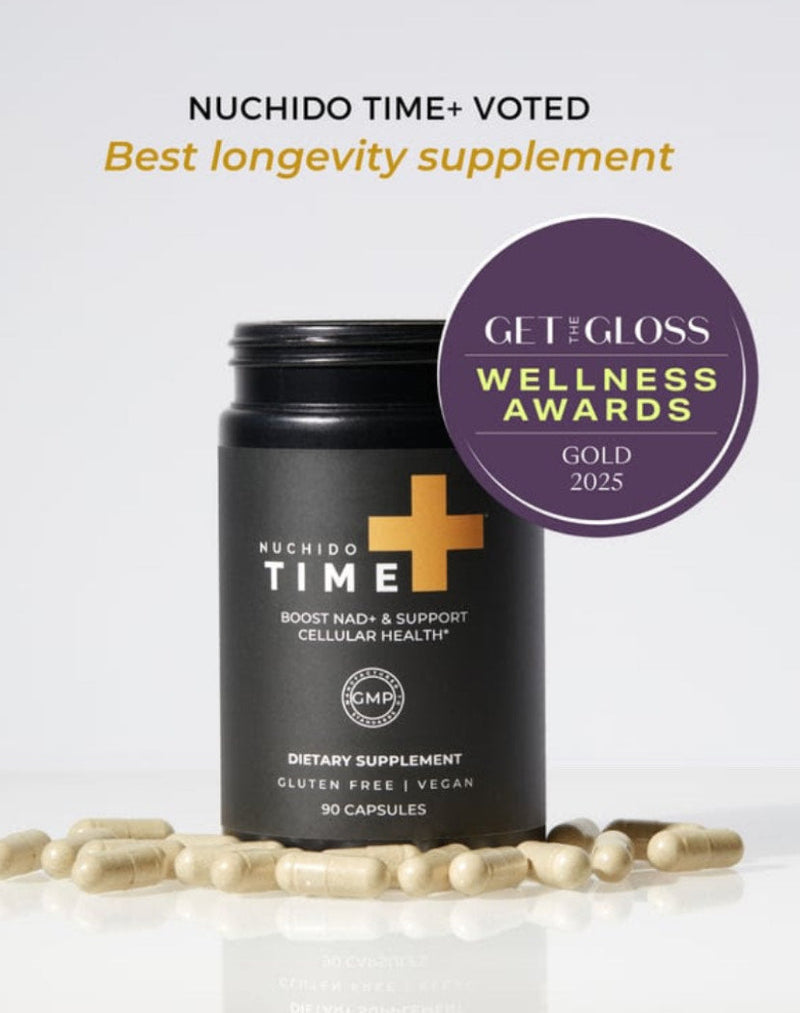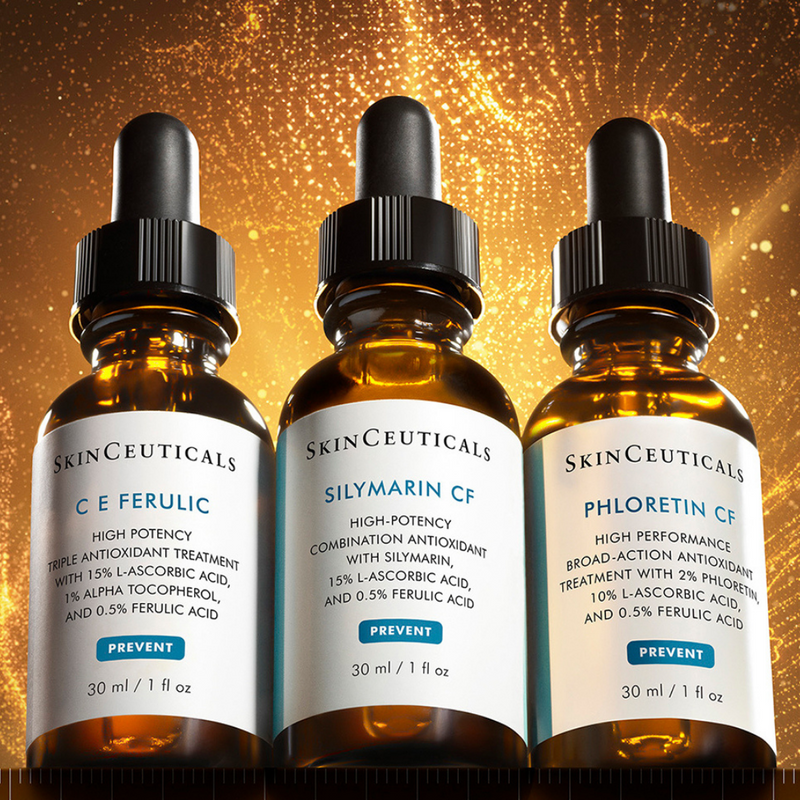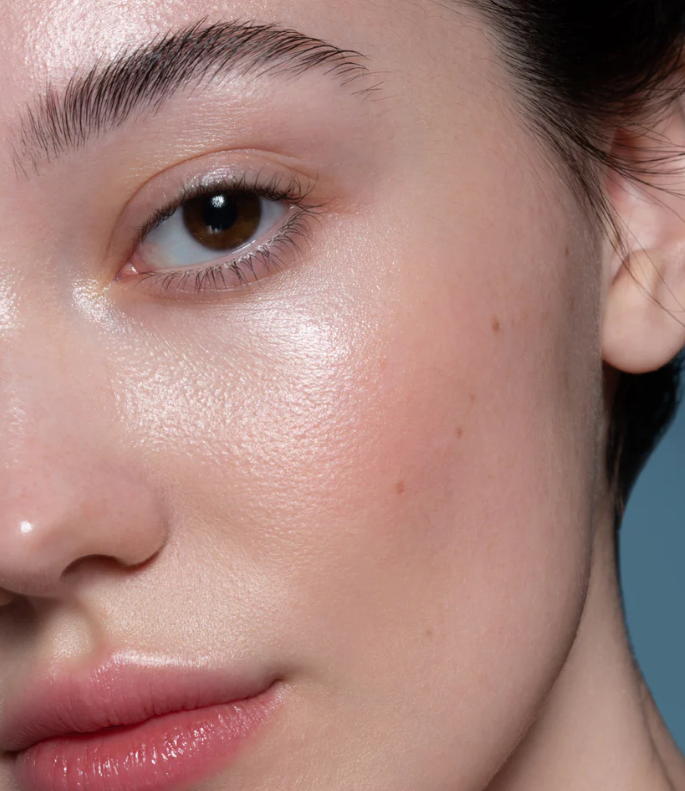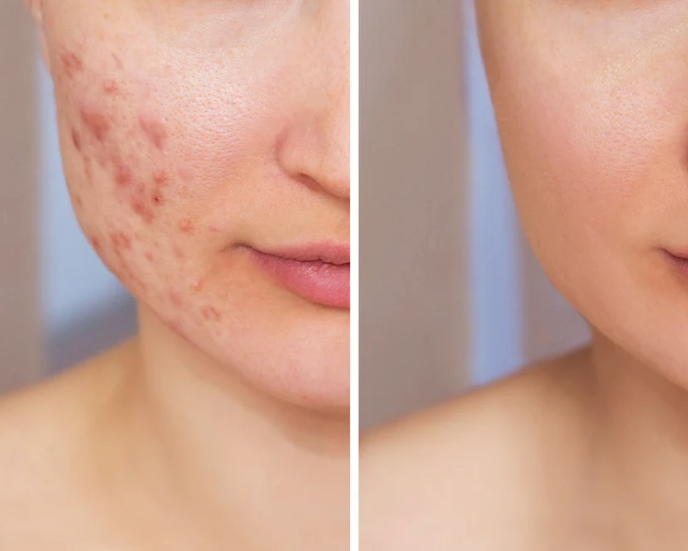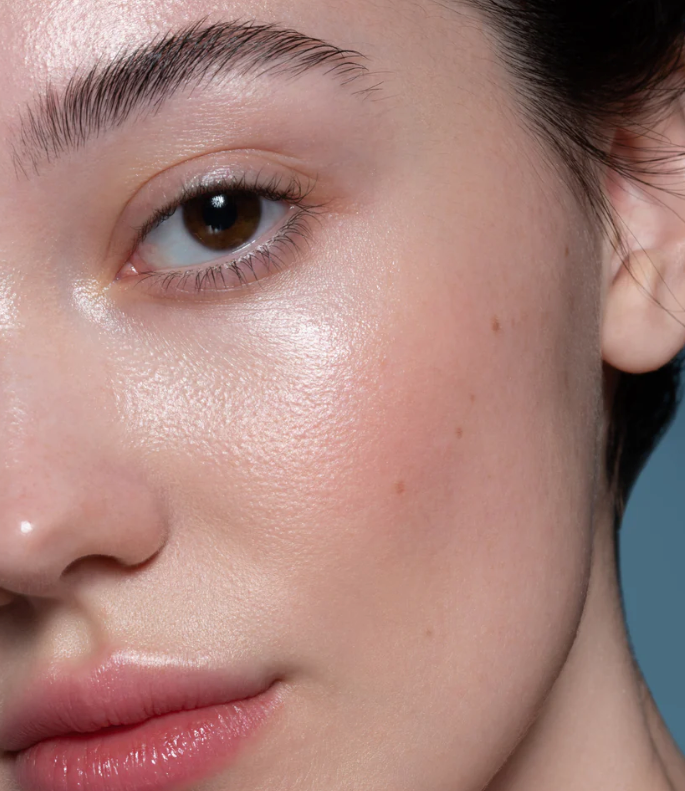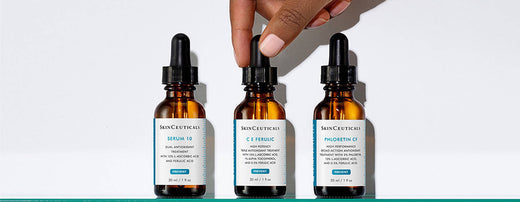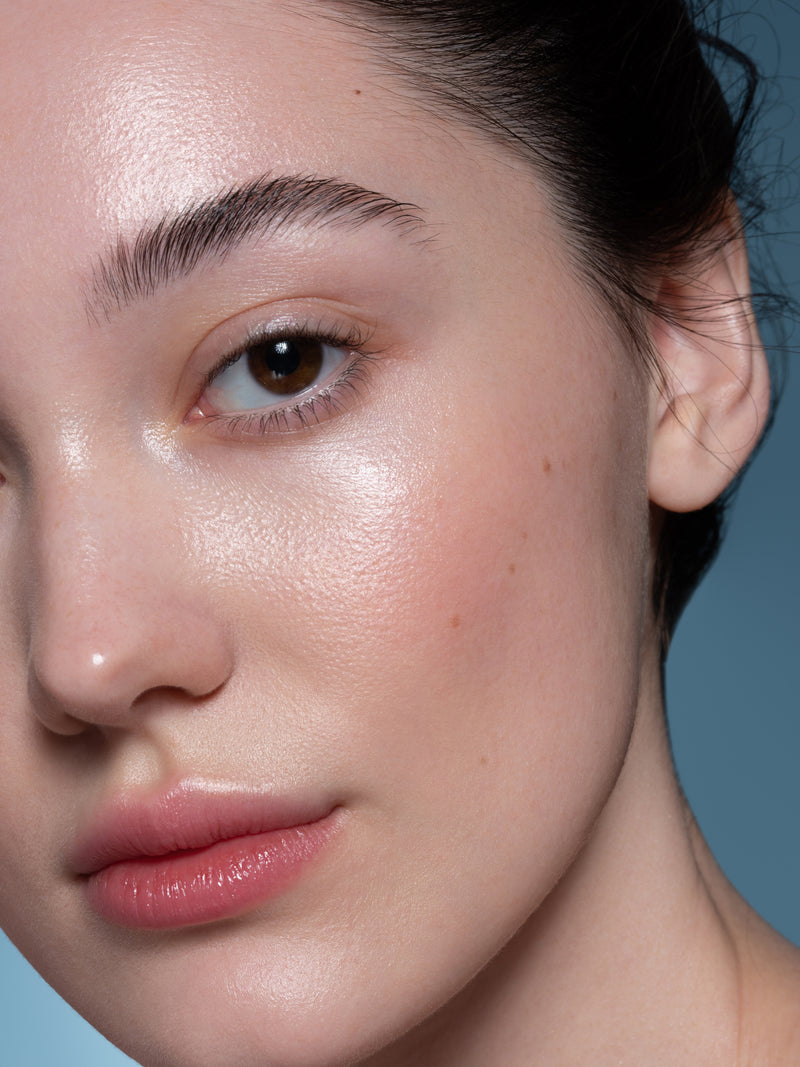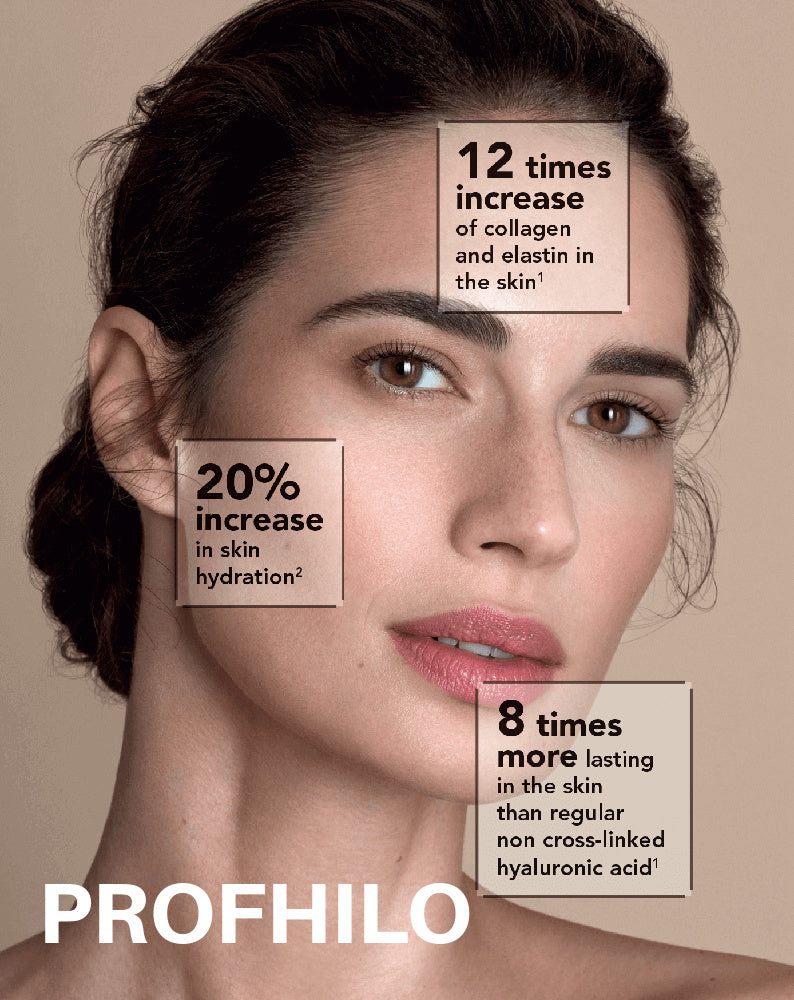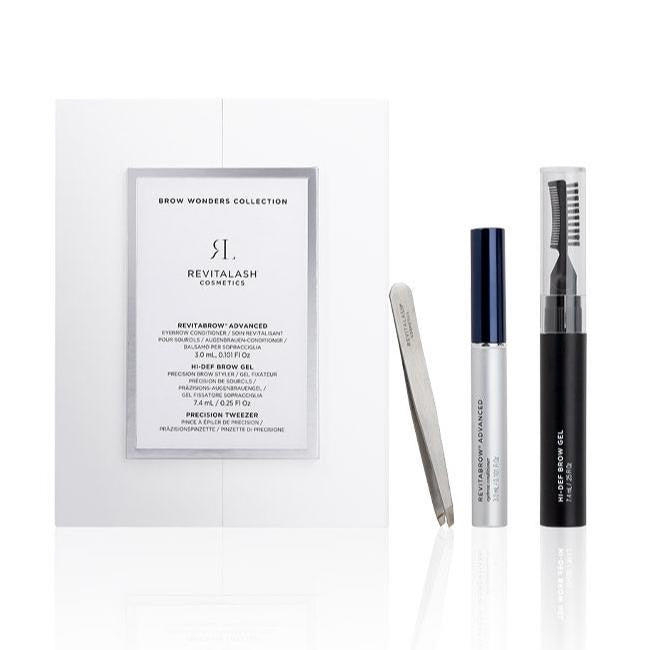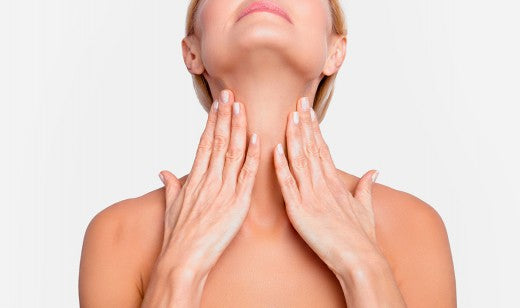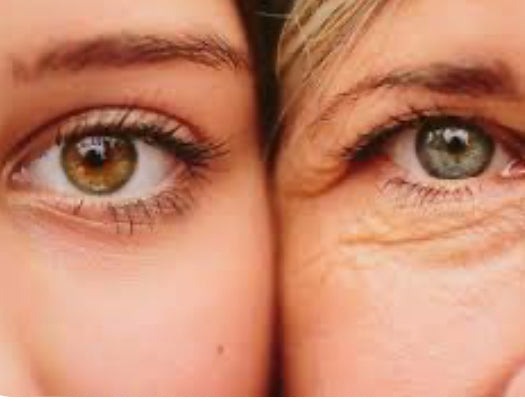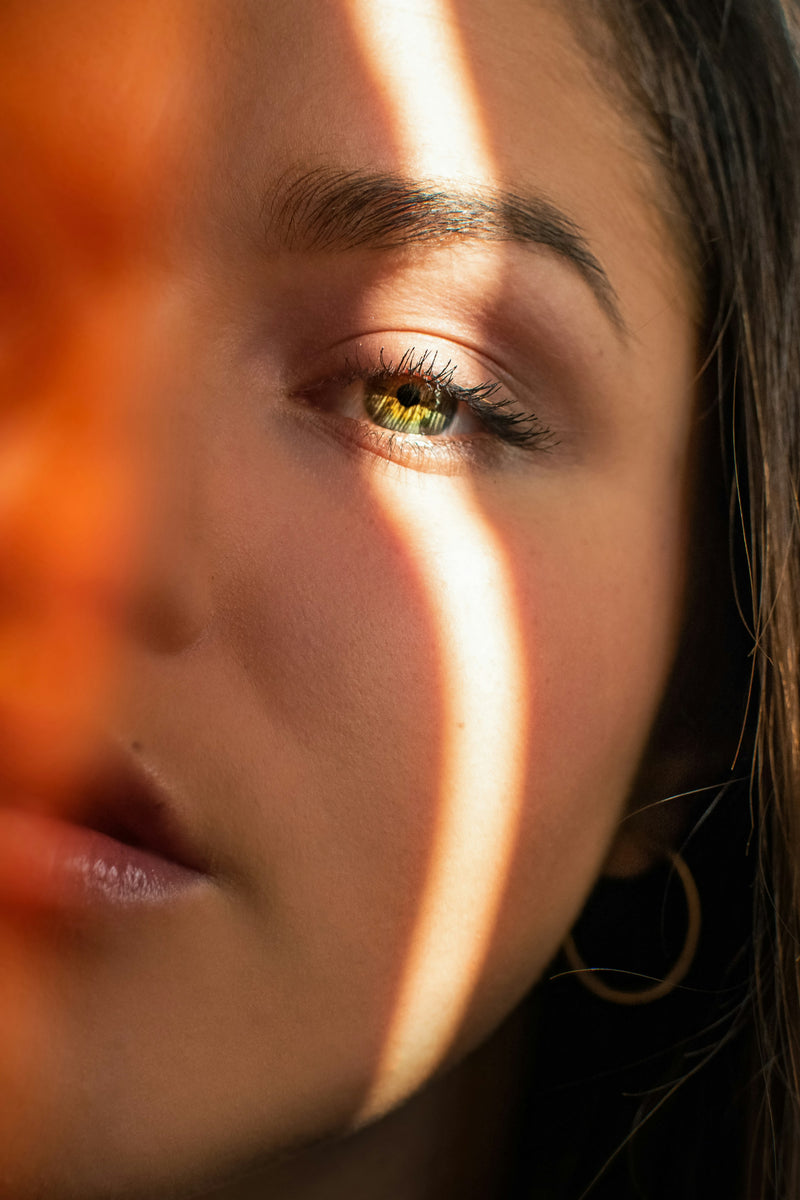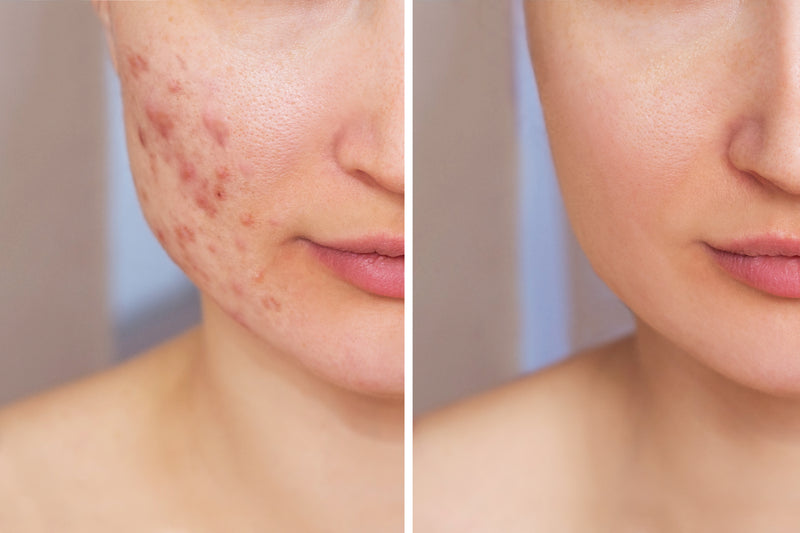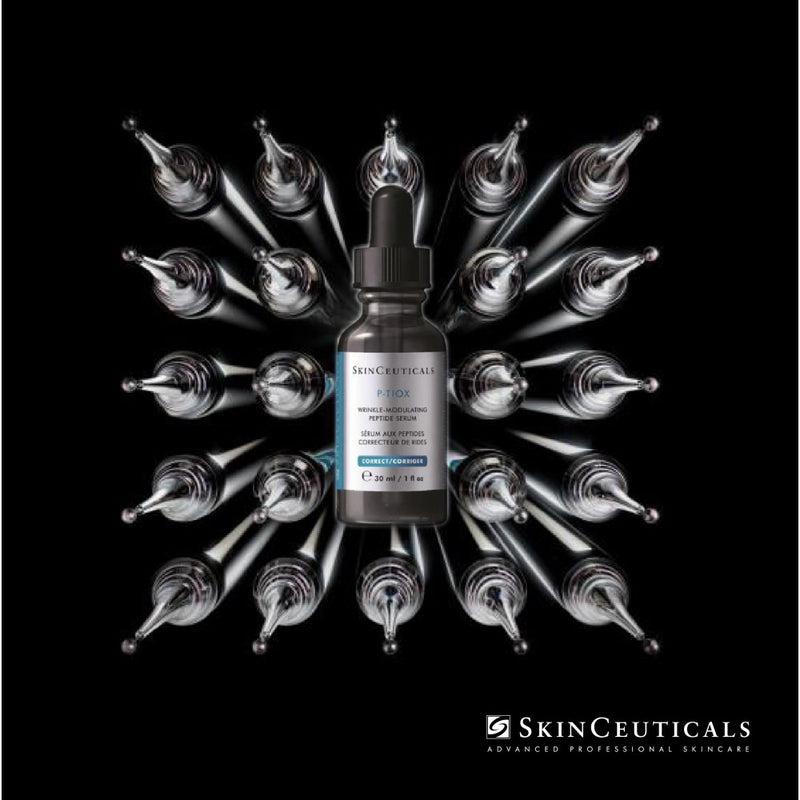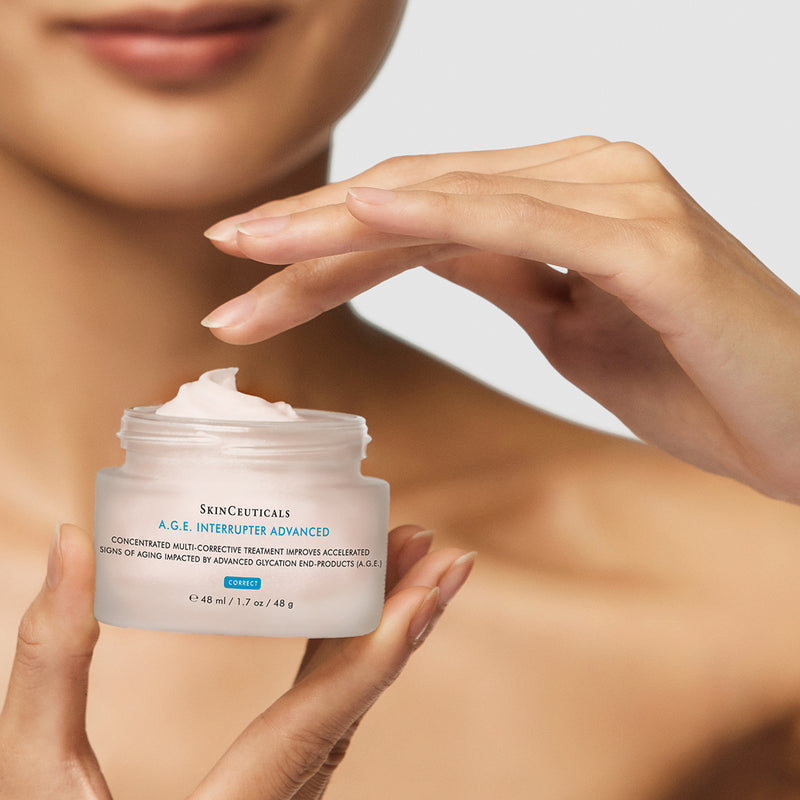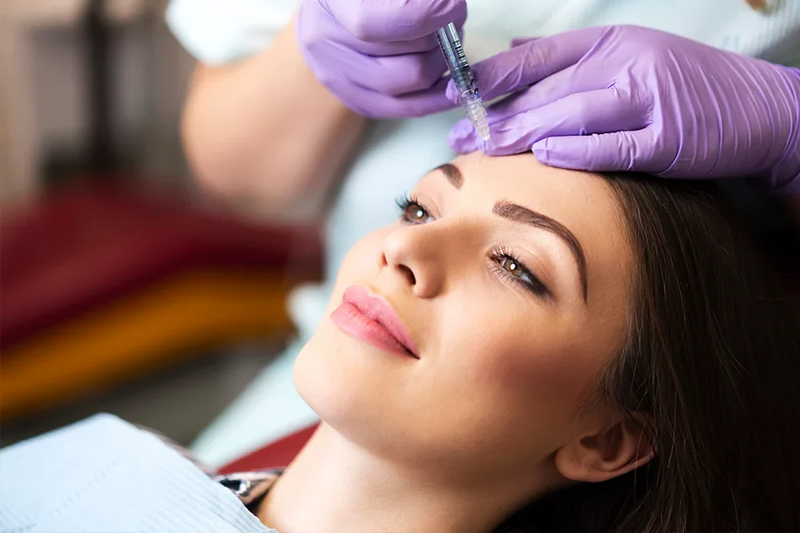Types of UV rays: UVA and UVB
What is UVA and what is UVB? The sun emits two types of ultraviolet (UV) radiation that reach our skin: ultraviolet A (UVA) and ultraviolet B (UVB). So if you are wondering what does UVA stand for or what does UVB stand for, they stand for ultraviolet A and ultraviolet B. Both types of damage unprotected skin, but how they go about doing that differs. Knowing how UVA and UVB rays and their ultraviolet light differs is essential to understanding the need for broad-spectrum sun protection.
UVA and UVB light are not within the spectrum of visible light that the human eye can see. All light rays, including UVA and UVB rays, have different wavelengths, measured in nanometres, or “nm” for short. To give you some perspective, a nanometre is one billionth of a metre. Some of those rays – like blue light – are visible to us, some aren’t.
UVA light, also known as long-wave light, accounts for about 95% of the UV light that reaches our skin. Although both UVA and UVB are bad for skin, UVA rays are more of a threat because a much larger percentage of them reach earth’s surface. They’re present all day long, year-round, even when it’s cloudy and the sun “isn’t out.” If you see daylight at any hour, UVA rays are always present.
UVA light has a wavelength of 320 nm to 400 nm. There are two types of UVA rays: UVA1 and UVA2. UVA1 light is in the range 340–400 nm; UVA2 light is in the range 320–340 nm. These differences in wavelength are important because specific sunscreen actives work best either alone or in combination with other actives to protect from both forms of UV light.
As a rule, regardless of the combination of active ingredients, a “broad spectrum” label on any SPF-rated product is a reasonable assurance that the sunscreen has been through and passed the testing required to make this claim.
UVA rays are considered the sun’s silent killers because, unlike UVB rays, you do not feel the effects of UVA rays damaging your skin. UVA rays are the cause of tanning, and unless you burn first, getting a tan isn’t painful – but, those unfelt UVA rays are reaching deep into skin, causing havoc in every layer entering your skin light an x ray.
What is UVB light?
Firstly, what is UVB? UVB light has a wavelength of 290 nm to 320 nm, a much smaller range than UVA light. Although not as skin-penetrating or ever-present as UVA rays, UVB radiation is powerful: it’s directly responsible for sunburn and other visible changes to skin’s surface, including discolouration. UVB radiation also plays a role in skin cancers.
Unlike UVA rays, the intensity of UVB rays varies to a much greater degree based on geographic location, time of day, and season. In the northern hemisphere, UVB rays are strongest between April and October, when there are more daylight hours, with peak intensity between 10:00 am and 4:00 pm.
Just like UVA light, UVB light is also present year-round, but UVB rays are more prevalent in sunny climates than in non-sunny climates. UVB light (and UVA light) is reflected from sand, water, and snow (80% of UVB rays reflect from snow!). UVB is also more damaging at higher altitudes than at lower altitudes, which is why skiers and mountain climbers need sunscreen. The same is true for UVA light, with the difference being the higher intensity of UVB when it’s at its most potent.
What is the difference between UVA and UVB?
UVA rays penetrate farther into skin than UVB rays, steadily destroying key substances in skin that give it its firmness and elasticity. UVA rays are a leading cause of wrinkles and a cause of, or major contributor to, every type of skin cancer.
One more difference: UVA rays penetrate glass, while UVB rays do not. Unless the window you sit by at work or the windows in your car are specially treated to filter UVA radiation, your skin is being exposed to UVA rays, making sunscreen an absolute necessity.
The SPF rating of sunscreens is related to protection from UVB rays. To ensure adequate protection from UVA and UVB rays, look for sunscreens labelled “broad spectrum,” which indicates they have been tested and are permitted to make that claim.
The two types of ingredients in sun cream are mineral and synthetic. Both are equally protective. Mineral or synthetic ingredients can be included in formulas created for any skin type. For example, if you have normal to oily skin, there are weightless, non-greasy options; if you have normal to dry skin, you can find skin-smoothing, hydrating SPF products.
Which type of sunscreen is the best?
The differences aren't about which type is more effective; rather, it comes down to personal preference and whether your skin is sensitive, as mineral sunscreens are considered the gentlest options.
Mineral sunscreens: There are only two mineral sunscreen ingredients: titanium dioxide and zinc oxide. They work in the skin's uppermost layers to both absorb and (to a lesser extent) deflect and scatter the sun’s harmful rays. These mineral ingredients are sometimes referred to as physical sunscreens or physical blockers, although that’s not a factual representation of how they work.
Synthetic sunscreens: There are over 30 synthetic sunscreen ingredients, all of which absorb into the top layers of skin, where they work similarly to mineral sunscreens: by scattering and deflecting the sun’s harmful rays and by converting UV rays into heat and “deactivating” them. All skincare ingredients are chemicals – even water.
Interesting fact: In the world of skincare, mineral sunscreen ingredients are often referred to as "organic". In the world of science, mineral sunscreen ingredients are actually inorganic chemicals..
It’s important to know that there’s nothing inherently better or worse about formulas containing either mineral or synthetic sunscreen ingredients. What matters is that they protect your skin from sun damage. Yes, one or the other may be a better choice for your skin type, but the ingredients themselves should make that determination – how your skin tolerates the ingredients and texture also determines their suitability.
Which sun cream is the best?
As we said, the right sun cream for you is the one you’ll look forward to applying daily. It should be rated SPF 30 or higher and provide broad-spectrum protection to prevent damage from the sun’s damaging UVA and UVB rays. Beyond that, to make an informed choice, you need to know how your skin type responds to different sunscreen ingredients and textures: those containing mineral actives, synthetic actives or a combination of both.
Mineral sunscreens:
- Begin to work immediately on application but must be absorbed to be most effective and to ensure they don’t wipe off on clothing.
- Have little risk of irritating skin
- Do not penetrate past the skin's uppermost layers.
- May leave a white cast, especially on darker skin tones but the best pure mineral sunscreens have an almost sheer finish
- May need more careful, liberal application because of the way they work in formulas.
Synthetic sunscreens:
- Begin to work immediately on application but must be absorbed to be most effective and to ensure they don’t wipe off on clothing.
- Are generally found in products with thinner textures.
- Tend to be preferred for water-resistant formulas because they don’t turn milky looking when you sweat or get wet, however, as with any sunscreen, you must reapply often.
- Can be sensitising for those with extra-sensitive skin.
- Can penetrate the skin and be absorbed in small amounts that are not shown to have health risks.
- Whichever sun cream you choose, it’s crucial to use it year-round. Even if you think the sun won't burn your skin, daylight – even through clouds – will age the skin and increase the risk of skin cancer. Scary but true: the sun’s UVA rays pass through windows! You won’t feel the damage but it’s happening, nonetheless.
How long does sunscreen last once opened?
This all depends on exactly how and where it has been used. When stored correctly, it should be effective right up until the expiration date. But sunscreen that has been exposed to heat, direct sunlight, bacteria, and moisture can degrade faster and will offer less protection – or even none.
This means it’s always best to store sunscreen in a cool, dark, and dry place. So, when you are out and about, try wrapping it in a towel to stop sunlight from compromising its effectiveness. Expired sunscreen can’t be relied upon to provide any of that wonderful protection. And if you do decide to use an out-of-date sunscreen, you may end up with sore, red skin. Plus, you’ll also be exposed to harmful free radicals, which can accelerate skin ageing.
Most people know that they should use sun cream to reduce the risk of skin cancer and premature skin ageing, but there’s an SPF-enhancing sidekick that’s often overlooked – antioxidants. We reveal the science behind how antioxidants boost your sun cream’s effectiveness + tips to keep your skin looking young, healthy, and vibrant.
The residual UV exposure, from the rays that do get through, can trigger free-radical damage that accelerates skin ageing in the form of wrinkles, dark spots, loss of firmness and other issues. Even if you can’t see or feel the damage, it’s happening, albeit at a deeper level. The results will show up over time. This doesn’t mean sun cream isn’t effective or worth using – it absolutely helps protect skin from sun damage – but even superheroes need a little help every now and then.
How do antioxidants protect the skin?
Antioxidants can help compensate for sun cream’s inherent shortcomings (and for human error in application) by neutralising the free-radical damage that sun exposure causes. Antioxidants literally play a defensive role by diffusing the effects of the bad rays that make it through sun cream. Not only that, but antioxidants also help defend the skin from other sources of free radicals, such as high-energy visible (HEV) light and blue light from your phone.
What are the benefits of antioxidants in sun cream?
Many antioxidants also have skin-calming properties (environmental exposure stresses the skin) and play a formulary role by helping to stabilise sunscreen whilst also boosting its effectiveness.
Antioxidants supercharge your sun cream by ensuring maximum protection and supplemental repair for your skin.
When & how to use antioxidants daily
The easiest way to get improved environmental protection is to apply an antioxidant-rich sun cream every morning.
You can also use an antioxidant serum before applying your sun cream. (Products with sunscreen should always be your last skincare step in the AM; serum and moisturiser can be layered beneath based on their textures.)
Some recommended products:
All of the above will help provide a synergistic defence and help your skin stay supple, healthy, even toned and vibrant.
